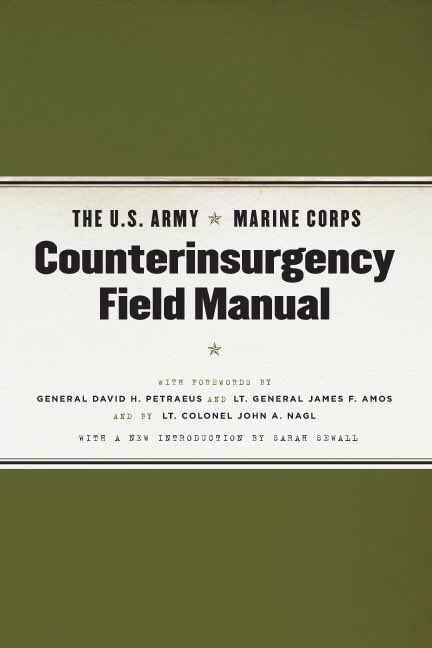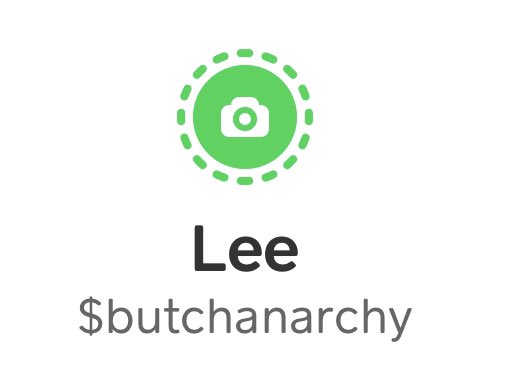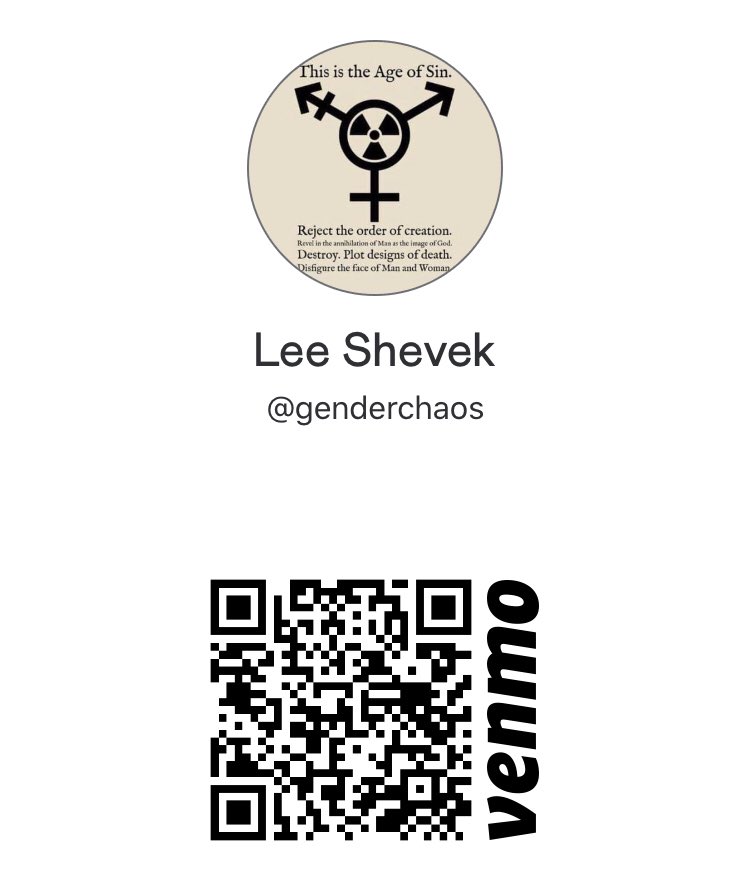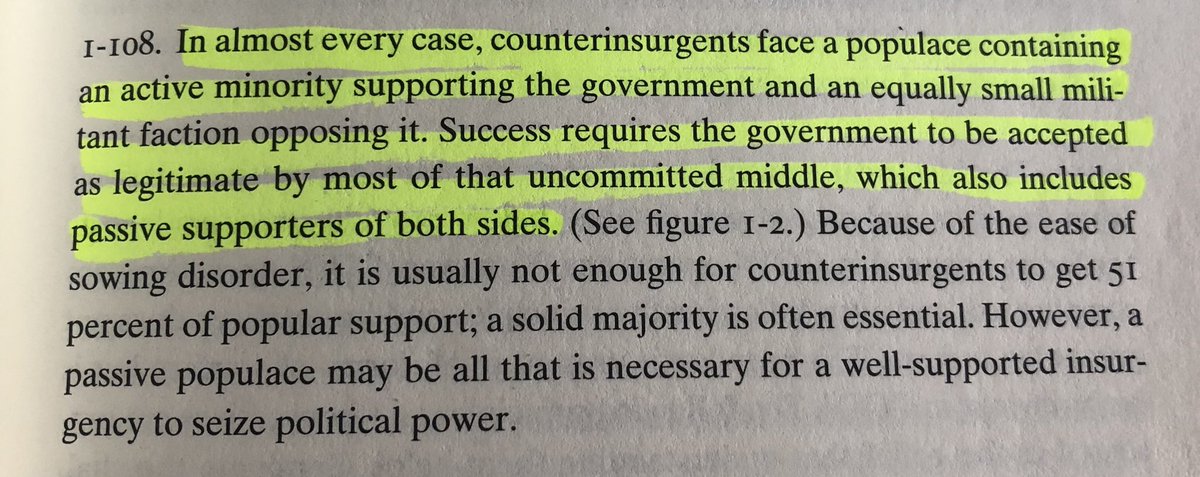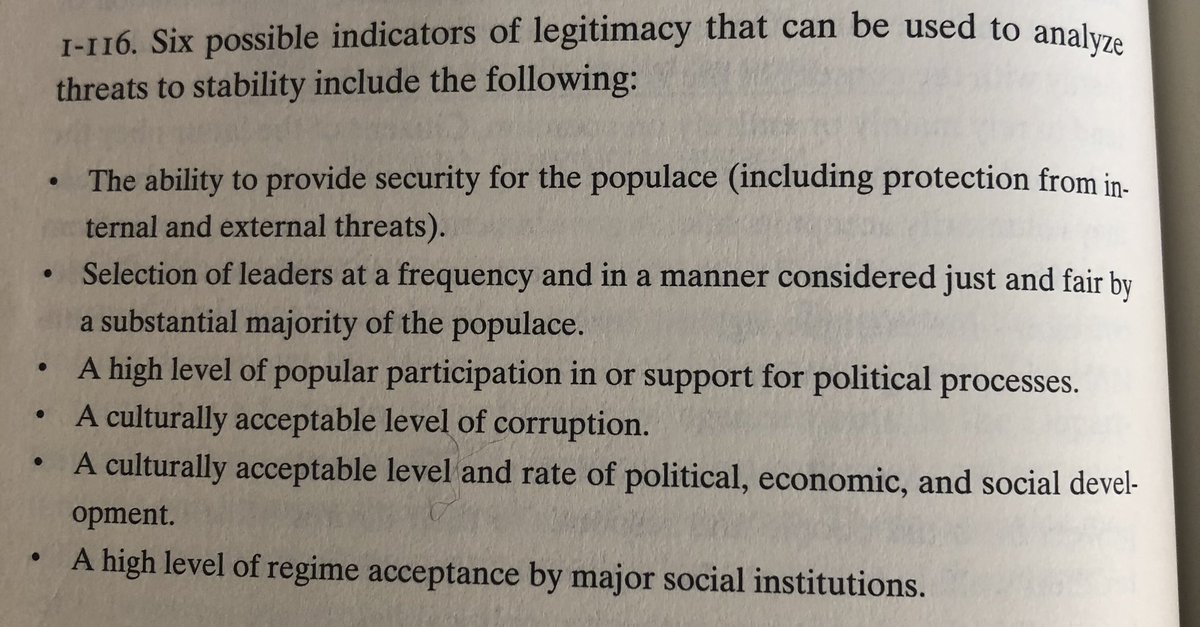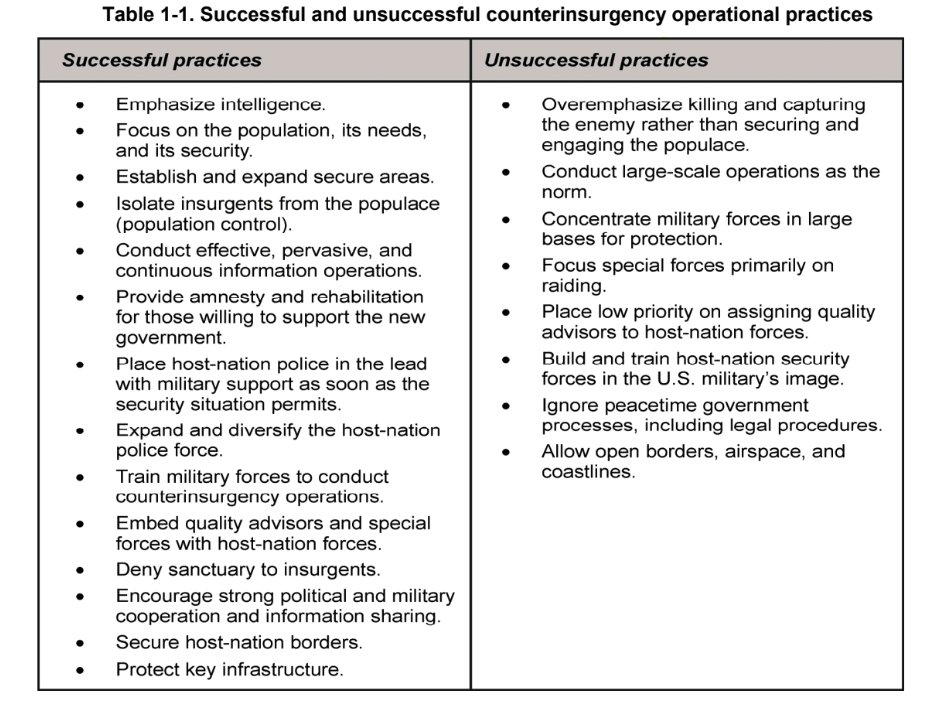Your Friendly Butch Anarchist Live-Tweet Reading: The U.S. Army/Marine Corps Counterinsurgency Field Manual
Part 4
(Update: I’ll be doing these on a regular schedule of Monday evenings going forward)
Part 4
(Update: I’ll be doing these on a regular schedule of Monday evenings going forward)
Find Part 1 here: https://twitter.com/butchanarchy/status/1291559405696106496?s=21
Part 2 here: https://twitter.com/butchanarchy/status/1292995286197923840?s=21
Part 3 here: https://twitter.com/butchanarchy/status/1294076761123119104
Part 2 here: https://twitter.com/butchanarchy/status/1292995286197923840?s=21
Part 3 here: https://twitter.com/butchanarchy/status/1294076761123119104
If you like my work/this helps your understanding and you want to show your appreciation, you can send me a tip at Squarecash: $butchanarchy | Venmo: @ genderchaos
If there’s continued interest in this I’ll continue through the manual! Any support is deeply appreciated

If there’s continued interest in this I’ll continue through the manual! Any support is deeply appreciated


I’ve compiled all previous parts into more easily readable PDFs that you can find the link to on my Patreon (the post with the Dropbox link is public and free to access). While you’re there, consider signing up for regular support/join my book club  https://www.patreon.com/butchanarchy
https://www.patreon.com/butchanarchy
 https://www.patreon.com/butchanarchy
https://www.patreon.com/butchanarchy
Today we’re starting on the other half of Chapter 1: Insurgency and Counterinsurgency.
We’re finally digging into the “Aspects of Counterinsurgency” section and it’s bound to be interesting and all sorts of fucked up.
We’re finally digging into the “Aspects of Counterinsurgency” section and it’s bound to be interesting and all sorts of fucked up.
Counterinsurgency (COIN) differs from peacekeeping operations in an absolutely key regard. In peacekeeping, the goal is an absence of violence. The counterinsurgent, however, views this absence as a potential mask over insurgent operations. They look on peace with suspicion.
(p.35)
This whole paragraph is a pretty vital read imo. Counterinsurgents are at a disadvantage in that maintaining a state means projecting uniform and uncompassing power, dominance, and control. They *have* to make most people believe in that power in order to keep it.
This whole paragraph is a pretty vital read imo. Counterinsurgents are at a disadvantage in that maintaining a state means projecting uniform and uncompassing power, dominance, and control. They *have* to make most people believe in that power in order to keep it.
“Legitimacy is the main objective.” (p.37)
Counterinsurgents’ objective is to enforce and strengthen the sovereignty of a state government so it can carry out its key objectives: regulating social relationships, extracting resources, and taking actions in the public’s name.
Counterinsurgents’ objective is to enforce and strengthen the sovereignty of a state government so it can carry out its key objectives: regulating social relationships, extracting resources, and taking actions in the public’s name.
They differentiate here between “illegitimate” and “legitimate” governments here. They write that “All governments rule through a combination of consent and coercion.” (p.37) But “legitimate” governments rule are supposed to rule primarily with the consent of the governed.
“Illegitimate” governments rely mainly or entirely on coercion. According to the manual, in typical the liberal tradition, legitimate governments are inherently stable. Illegitimate governments are inherently unstable, police states, fragile, and poorly administered.
Hilarious to read the U.S. Military/Marine Corps Counterinsurgency Field Manual accidentally making a case against the legitimacy of the United States government tbh
Ah, and the U.S. Military’s accidental argument against the legitimacy of the U.S. government continues. 

They believe that Unity is absolutely essential for counterinsurgent success. They write that having one COIN leader who has authority over all agencies involved in COIN is ideal, but at minimum there should be a unity of effort between all leaders involved.
This includes NGOs. While many resist involvement with military, they write here that some sort of liaison is absolutely needed so that every possibility for presenting shared actions and messages around the insurgency is taken advantage of.
Need that united propaganda.
Need that united propaganda.
Political factors are FAR more important to counterinsurgents than military favors. Military actions may draw the most attention (ex: feds kidnapping people in Portland) but COIN aim for a political victory above all else. They MUST establish state legitimacy to win.
“Military actions executed without properly assessing their political effects at best result in reduced effectiveness and at worst are counterproductive.” (p.40)
Which is why most military officials were against deploying against the uprisings.
Which is why most military officials were against deploying against the uprisings.
It was not because it was against their consciences. It was because they need to save their legitimacy for later (i.e. when these uprisings meet together with the total civil upheaval that the impending total economic ruin will cause).
For Counterinsurgents, it is vital to isolate insurgents from their cause and support. To be successful in this, COIN operations aim more towards separating insurgents from resources instead of just trying to kill every insurgent.
They write here that “clearly, killing or capturing insurgents will be necessary,” (p.41) but that attempting to kill all of them risks generating popular resentment and creating martyrs that motivate the cause of the insurgency.
Instead, counterinsurgents aim to cut off the resources that allow dynamic insurgencies to continue to regenerate themselves.
Sometimes by actually redressing the social/political economic grievances that began the insurgency.
Sometimes by population control/border security.
Sometimes by actually redressing the social/political economic grievances that began the insurgency.
Sometimes by population control/border security.
Urban insurgents are especially difficult for COIN operations to seperate from their cause and sources of support and are difficult to track because of the interrelated nature of their networks.
Successful COIN operations have to find a balance in their management of public information and expectations in fanning enthusiasm for their efforts while not making promises they cannot keep.
“Increasing the number of people who feel they have a stake in the success of the state and it’s government is a key to successful COIN operations.” (p.45)
In that, their aims are the same as ours. It’s ultimately about showing people where their stake in the struggle is.
In that, their aims are the same as ours. It’s ultimately about showing people where their stake in the struggle is.
^^ the state achieves this by obfuscation, by manipulation, by control, by fear, and by offering a select few power.
We achieve it by showing people the realities of how state power harms them, and by offering them solidarity in their efforts to get free with us.
We achieve it by showing people the realities of how state power harms them, and by offering them solidarity in their efforts to get free with us.
In a surprising turnaround from their earlier writing on unity and the need for highly centralized leadership, the manual states that in fighting insurgencies “Local commanders have the best grasp of their situations.” and “effective COIN operations are decentralized.” (p.47)
Lol I guess there’s always a point, even for the fuckin’ state, where high centralization and bureaucracy gets so unweildy and ridiculous that you have realize that you’re gonna need to empower the folks on the ground if you ever want to get anything done.
They go on to explore the various paradoxes of counterinsurgency operations, which I’ll summarize as best I can.
“Sometimes, the more you protect your force, the less secure you may be.” (p.48)
COIN success is gained by swaying the populace. If you establish a huge/visible force, they’ll realize that you’re actually just an occupying force in their communities and be alienated from you.
COIN success is gained by swaying the populace. If you establish a huge/visible force, they’ll realize that you’re actually just an occupying force in their communities and be alienated from you.
“Sometimes, the more force is used, the less effective it is.” (p.48)
COIN operations need to use force to establish the legitimacy of the state, but using too much increases the level of collateral damage and mistakes and will turn the populace against you.
COIN operations need to use force to establish the legitimacy of the state, but using too much increases the level of collateral damage and mistakes and will turn the populace against you.
^^^ PPB (and most police departments in the US rn) obvs skipped that part of the manual lol
“The more successful the counterinsurgency is, the less force can be used and the more risk must be accepted.” (p.48)
Corollary to previous paradox. As insurgent violence drops, counterinsurgent also has to roll back or else their violence will risk reviving the insurgent cause.
Corollary to previous paradox. As insurgent violence drops, counterinsurgent also has to roll back or else their violence will risk reviving the insurgent cause.
“Sometimes doing nothing is the best reaction.” (p.49)
Overreacting to an insurgent action like “opening fire on a crowd” or, in our context, tear gassing entire neighborhoods after people threw water bottles at you, tends to create more enemies than it takes off the streets.
Overreacting to an insurgent action like “opening fire on a crowd” or, in our context, tear gassing entire neighborhoods after people threw water bottles at you, tends to create more enemies than it takes off the streets.
“Some of the best weapons for counterinsurgents do not shoot.” (p.49)
Again, COIN victory is mostly political, not military. Establishing legitimacy through political means is more effective than just shooting a bunch of people.
Again, COIN victory is mostly political, not military. Establishing legitimacy through political means is more effective than just shooting a bunch of people.
This manual spends a ridiculous amount of time being like “I know this might seem controversial and shocking to you, and very likely will be hard to hear, and I’m SO sorry to say it but... killing people en masse is not as effective a strategy as we wish it was.”
“The host nation doing something tolerably is normally better than us doing it well.” (p.49)
If you’re trying to apply this to the context of the US uprisings, replace host nation with host city/state. Better optics to let the local cops beat the fuck out of locals themselves.
If you’re trying to apply this to the context of the US uprisings, replace host nation with host city/state. Better optics to let the local cops beat the fuck out of locals themselves.
“If a tactic works this week, it might not work next week; if it works in this porvince, it might not work in the next.” (p.50)
Successful insurgencies are highly adaptive and often part of a widespread network of effective communication that adjust to COIN practices quickly.
Successful insurgencies are highly adaptive and often part of a widespread network of effective communication that adjust to COIN practices quickly.
The more effective a counterinsurgent tactic is, the more quickly an insurgency is likely to make that effective obsolete because of the greater need to counter it. COIN operations have to respond to this by constantly developing new tactics and practices.
“Tactical success guarantees nothing.” (p.50)
Military actions rarely win over political ones.
A quote in this section that made me grin: “Insurgents that never defeat counterinsurgents in combat still may achieve their strategic objectives.”
Military actions rarely win over political ones.
A quote in this section that made me grin: “Insurgents that never defeat counterinsurgents in combat still may achieve their strategic objectives.”
They end and summarize this chapter with the following chart titled "Successful and unsuccessful counterinsurgency operational practices." (p.51)
Which I think is worth giving a solid look over.
Which I think is worth giving a solid look over.
That’s it for Chapter 1! If you like the work I’m doing here, please show your support through one of my tip jars or Patreon 

If there’s enough continued interest, next Monday we’ll move on to Chapter 2- Unity of Effort: Integrating Civilian and Military Activities


If there’s enough continued interest, next Monday we’ll move on to Chapter 2- Unity of Effort: Integrating Civilian and Military Activities


 Read on Twitter
Read on Twitter